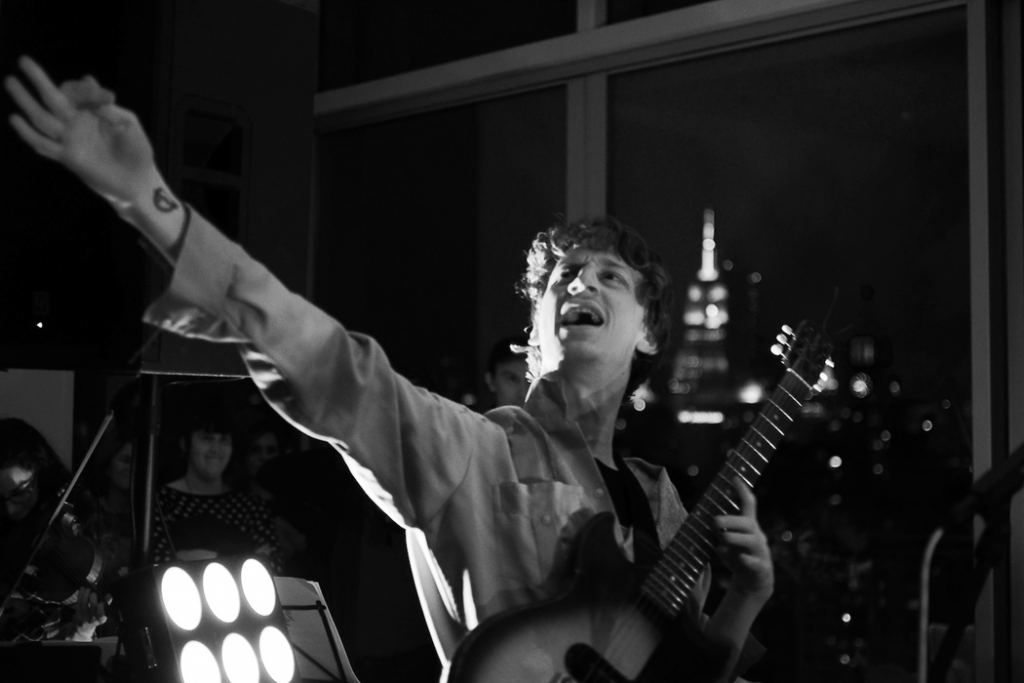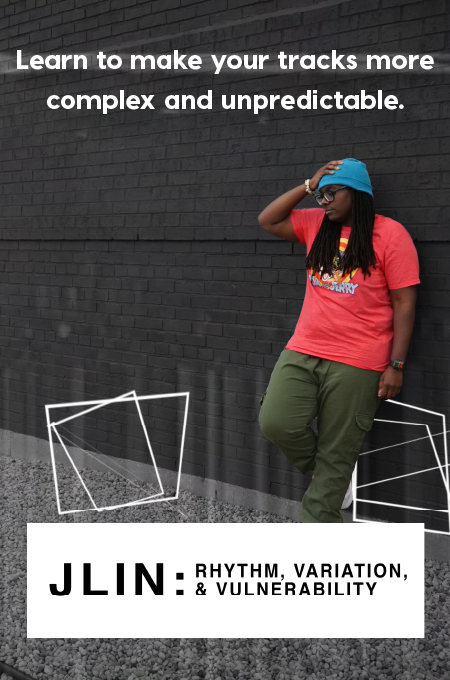+ Take your modern jazz piano and hip-hop beat making to new heights with Soundfly’s new course, Elijah Fox: Impressionist Piano & Production!
You may not have known this, but yesterday was International Jazz Day. Look around, and you’ll find a ton of jazz festivals happening right this moment worldwide — from Denton, Texas to Espoo, Finland, and not to mention New Orleans. On the surface, it might seem like jazz is doing just fine, chugging along and as popular as ever.
It ain’t.
Jazz needs a facelift. Nobody wants to listen to music that calls itself jazz. But the thing is, they’re already listening to jazz — it’s just camouflaged as something else. Not that there was ever really a lapse in the celestial partnership between hip-hop and jazz music, but lately this combo has produced some phenomenal works, backed up with unprecedented popular acclaim.
Some of the most obvious examples are Kendrick Lamar’s To Pimp a Butterfly, which brought together jazzers like Robert Glasper, Kamasi Washington, and Thundercat with tons of seasoned producers; BADBADNOTGOOD becoming the new rhythm section starlings of rappers like Tyler, The Creator and Ghostface Killah; and although Common has featured jazz on all of his records, man, his new band can really lay down the groove! Even Thundercat, who’s best known for his songwriting work with hip-hop/dance producer Flying Lotus, has been touring with a jazz trio with monster chops.
We’re also seeing the rebirth of the big band format, but jacked up with electronics, drum samples and synthesizers galore. Bands like Snarky Puppy, Kamasi’s band the West Coast Get Down (aka the Next Step), Mats Gustafson’s the Fire Orchestra, and fellow Scandinavians Jaga Jazzist, all purveyors of tightly controlled chaos reminiscent of the Sun Ra Arkestra (who are still touring by the way), have never had this big a world stage on which to showcase themselves.
And then there’s the fusion that keeps popping up around electronic dance music, central to the new appeal of groups like Kneebody, Gogo Penguin, Shobaleader One, and Archie Pelago.
Jazz is growing, indeed. It’s making its way into your living room, and you’re making your way into the concert hall to see it, but it’s kind of being a bit chameleon about the whole thing and not revealing its true self. Not as jazz, anyway.
With all this happening below the surface, you might have missed out on some of the best artists to have arisen in this camouflaged new jazz world in which we live. Here are 10 bands and artists who are truly shaking things up in the underground with elements borrowed from wherever.
Elder Ones
The New York Times’ longstanding jazz columnist Ben Ratliff fell in love with Elder Ones’ debut record upon first listen, calling it both “aggressive and sublime.” The quartet takes cues from Amirtha Kidambi‘s wordless vocal scales and melodic harmonium drones, yet here, each of those elements are just about as far away from their origins in Indian devotional singing as they are from jazz. But as they meet somewhere in the middle, the musicians responding to this unique sonic landscape are able to tightly grasp on and ride it to new places. Elder Ones performs high-intensity improvised blasts and meditative quiet repetitions all with the same concentration and energy. It’s truly addictive music.
Dans Les Arbres
Dans Les Arbres is an improvising Norwegian and French quartet that has been changing shape since as early as 2001. Although on paper this quartet looks like they could easily be categorized as a jazz ensemble, when they take the stage, all those pages get shoved out the window. The members almost seem to flip their instruments inside out in search of new colors and resonances inside each tone that have been left unchartered.
Ingar Zach’s giant circus drum, mic’d in multiple places in wide-panned stereo, acts as an amplification platform, giving the audience the sense that everything he touches is sounding all around them in the room. Both Christian Wallumrød’s prepared piano and Xavier Charles’ clarinet sound like synthesizers, able to produce any imaginable type of tone oscillation. And as a group, it all comes together to create a dense, yet fragmented, sound world, held together by thread and ready to collapse at any moment.
Yussef Kamaal
Yussef Kamaal is technically a duo, as the project was started by producer/keyboardist Kamaal Williams (aka Henry Wu) and drummer Yussef Dayes in multi-cultural South London. But they’ve performed and recorded as a trio and a quartet and with guest musicians galore. Their influences and origins are like a hearty stew of soul, hip-hop and drum and bass. In every micro-second of their music, you can taste these elements equally, like the stew has been sitting on the stove for 12 hours. It’s actually their super-power — we’ve heard groovy music before, but this is slow simmering gumbo music.
+ Read more on Flypaper: “8 Bedroom Producers You Need to Know Right Now”
Battle Trance
Battle Trance is a saxophone quartet led by composer Travis Laplante. As I believe all of them can, and do, use circular breathing techniques, the quartet is able to create these evolving and unending waves of droning harmony. Yet, they’re also capable of intertwining four-part counterpart and densely emotive arpeggiated passages. And this dynamic dichotomy makes their performances captivating from start to finish.
Obol Le
I had the pleasure of sharing a stage with singer and performance artist Ibelisse Guardia Ferragutti’s new quartet, Obol Le, earlier this year in Amsterdam, and it was one of the most fascinating live music experiences I’ve had in a long time. Ferragutti is Bolivian/Brazilian by way of both Italy and Holland, and the band is made up of musicians from both Amsterdam and Chicago, so their combined international roots serve as the foundation for the unique and singular chemistry of their music.
Using synthesizers and live tape manipulation among instruments and vocals, and combined with custom-built algorithmic video projections that respond to the music, this is like improvised jazz gone into jet-setting, shape-shifting hyperdrive. They don’t really have any recorded music yet, but stay tuned… they’re coming.
The Necks
Then there’s The Necks. What can I say that hasn’t already been said about this Aussie trio that’s consistently kicked ass since the late ’80s? I could draw your attention to their stage setup and how they respond to one another with sonic precision even while pianist Chris Abrahams sits facing away, never looking back to the other musicians. In fact, they mostly play with their eyes closed.
Or, you can listen for the incredibly linear crescendo that lasts for their entire performance, even as it features innumerable subtle variations and shifts in momentum along the way. Or, I could direct your attention to the way the Necks seem to eschew composition entirely and create a sort of music that feels more like changes in temperature from hot to cold than it does like a performance of sound.
But you could just find all that stuff out for yourself and pick up any one of their 20 albums.
+ Learn more on Soundfly: Looking to deepen your knack for improvising? Take some cues from our free course, The Improviser’s Toolkit.
Aaron Diehl
Aaron Diehl is one of these young virtuoso types. He’s got awards under his belt I’ve never even heard of, he tours the world playing the biggest festivals, and he’s an innovator on the piano not because he’s constantly looking forward, but because he’s finding new ways to be deeply in touch with the heritage of his instrument and genre.
His latest studio record features two musicians who are almost three times his age, Benny Golson and Joe Temperley. His music has classicism and scholarly rigor running through its veins, it swings like Ellington and bops like Milt Jackson, but it feels fresh, daring, and raw at the same time. For such a young instrumentalist and composer, that’s quite the meritorious achievement.
Diehl’s also a licensed pilot.
Tigran Hamasyan
This list wouldn’t be possible without artists like Armenian pianist and composer Tigran Hamasyan paving the path with an utterly innate knack for complexity and having so much fun within it. For so many musicians, playing difficult music is serious — for Hamasyan, it’s simply inevitable. And he loves every minute of it.
His music draws heavily from Armenian folk melodies and traditions, yet they’re set within a framework of intense syncopation, as well as rhythmic, timbral, and harmonic changes that kind of make your head spin. Aside from imagining his style as a combination of the intensity of John Zorn’s Naked City and the audience-friendly tightness of The Bad Plus, I’m pretty sure there’s nothing like Tigran’s music anywhere else on the planet. Oh and he sings, too, and hums to himself.
Christian Scott aTunde Ajouah
Ajouah’s actually a Grammy-nominated artist, so I feel sheepish adding him to a list of “underground” musicians, but it’s not like he’s a household name yet. His work in composing, arranging, and improvising is all top notch. If you heard his record without knowing who it was, you might think it was a lost outtake of Miles. And as a trumpeter, he’s explorative in both note and tone, always seeking to deliver notes in unusual ways while keeping the melodies and riffs intact and crystal clear. It’s a combination that has garnered a ton of success and attention in recent years.
If you recognize that young ‘Trane soundalike, Braxton Cook, in his band, it’s because we recently interviewed him on his practice routine.
Tredici Bacci
Gotta give props to Simon Hanes for putting together this improvising orchestra and instead of giving them jazz charts, he’s written entire suites of music inspired by retro Italian pop and film music.
Talk about camouflage. If you want to bring jazz back to a place where people actually want to listen and engage with it, wrap it up in some sexy Italian music, or hip-hop, or a Middle Eastern maqam, and serve it to audiences that way.
It’s 2023, and jazz is a chameleon.
Play Your Heart Out!
Continue your learning adventure on Soundfly with modern, creative courses on songwriting, mixing, production, composing, synths, beats, and more by artists like Kiefer, Kimbra, Com Truise, Jlin, Ryan Lott, RJD2, and our newly launched Elijah Fox: Impressionist Piano & Production.




